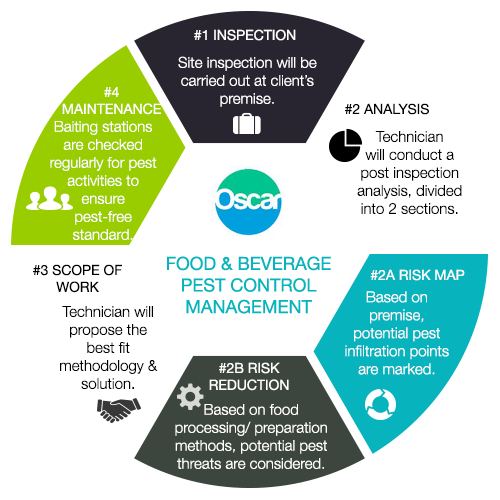Past The Far-Off View Of Developments In Pest Control, There Is An Ingenious Technique On The Verge Of Changing The Way Pests Are Taken Care Of
Past The Far-Off View Of Developments In Pest Control, There Is An Ingenious Technique On The Verge Of Changing The Way Pests Are Taken Care Of
Blog Article
Material Author-Jernigan Holmberg
As you navigate the world of pest control innovations, you'll find a landscape changed by innovative modern technologies and techniques. From sophisticated surveillance systems that supply real-time understandings right into bug actions to eco-friendly treatments that focus on sustainability, the area is progressing swiftly. However what lies beyond these advancements? What brand-new frontiers are being checked out to address insect challenges more effectively? The response may stun you.
Advanced Keeping Track Of Solutions
When monitoring insects, using innovative systems can substantially improve efficiency. By utilizing advanced modern technologies such as automated sensors and remote monitoring devices, you can collect real-time data on bug task degrees and patterns. These systems can assist you determine issue areas more accurately, permitting targeted intervention strategies that are both effective and resource-efficient.
One essential benefit of sophisticated tracking systems is their capability to give early discovery of pest problems. By without delay recognizing signs of pest visibility, you can take swift activity to avoid the issue from rising, saving you money and time in the future. Additionally, these systems can use insights into the origin of insect issues, allowing you to attend to underlying problems and apply proactive measures to minimize the risk of future invasions.
Including sophisticated surveillance systems into your parasite control techniques can enhance your procedures and enhance overall effectiveness. With real-time data and targeted remedies at your disposal, you can stay ahead of insect concerns and keep a pest-free environment with higher ease.
Eco-Friendly Treatments
Utilizing environmentally friendly treatments in pest control techniques can dramatically lower ecological effect while successfully managing pest populations. These treatments prioritize natural services over severe chemicals, making them more secure for both the setting and the individuals revealed to them. Environmentally friendly insect control techniques often entail making use of herb oils, microbial pesticides, scents, or catches to target details parasites without harming beneficial pests or pets in the ecological community.
https://weather.com/science/environment/news/2023-06-06-how-to-help-a-wild-animal-bison-yellowstone -friendly treatment is diatomaceous planet, a natural powder that successfully regulates parasites like ants, roaches, and bed bugs by dehydrating them. Another eco-friendly option is neem oil, derived from the neem tree, which serves as a natural insect repellent and interrupts the growth and reproduction of parasites. These therapies not only offer efficient parasite control however also add to lasting parasite monitoring by decreasing the adverse effect on the environment.
Sustainable Pest Management
To attain sustainable insect management, focus on techniques that reduce environmental damage while successfully controlling pest populations. Executing integrated parasite administration (IPM) methods is essential to achieving this balance.
Begin by analyzing the bug problem and identifying the insect species present. Utilize non-chemical control methods such as securing access points, getting rid of food and water resources, and preserving proper hygiene. When chemical treatments are necessary, choose low-toxicity pesticides and use them with precision to reduce off-target impacts.
Encourage all-natural pest killers like ladybugs, lacewings, or birds to aid control pest populaces. Make use of scent catches or insect growth regulatory authorities to interfere with mating cycles and decrease pest numbers. Routinely monitor parasite activity to capture infestations early and avoid them from spreading. Applying social practices like crop turning and choosing pest-resistant plant varieties can also help in reducing the need for chemical treatments.
Conclusion
As you navigate via the ever-evolving landscape of insect control developments, keep in mind that each improvement is like a sign of light directing you in the direction of a greener, extra lasting future. Accept the power of modern technology and green treatments to secure your home and the setting.
Allow the consistency in between nature and scientific research motivate you to dominate any kind of bug challenge with self-confidence and grace. Maintain moving forward, armed with the most recent technologies and methods in your toolbox.
